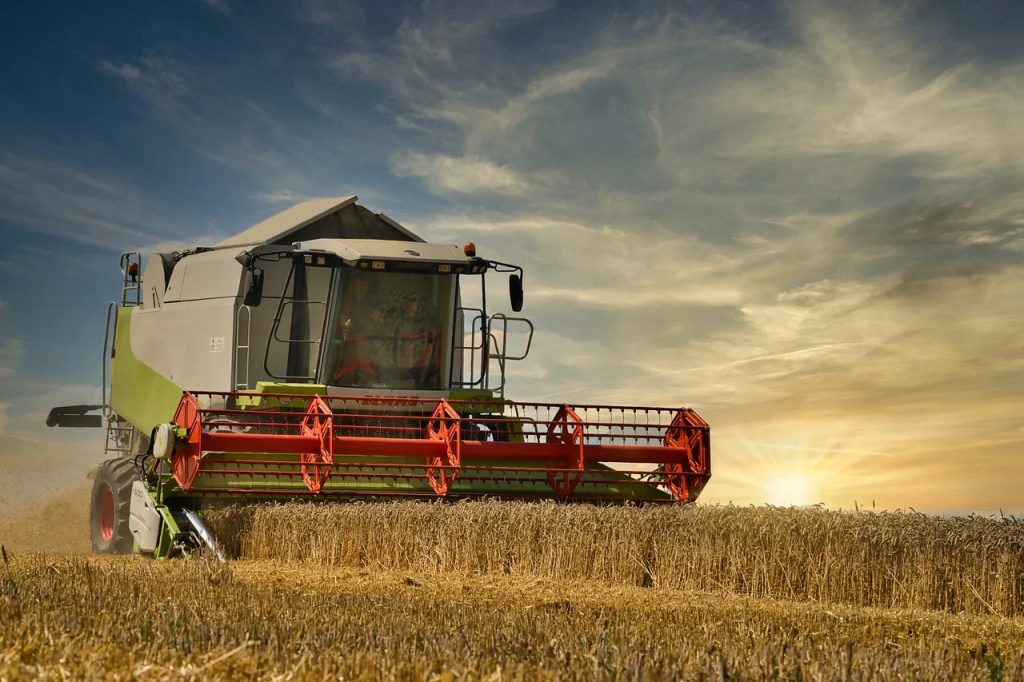In agricultural production, the header of a harvester plays a key role in determining both the efficiency and quality of crop harvesting. The right header can boost operating speed and significantly reduce crop loss. However, farmers often feel confused when faced with different types of headers. Which header is best for their specific crops? How can they balance performance and cost? These questions directly affect farming profitability and harvesting costs.
Choosing the right header requires careful consideration of many factors. These include crop types, field conditions, equipment durability, and fuel consumption. Different crops need different headers, and when the terrain is complex or the working conditions are challenging, the right header becomes even more important. Additionally, the long-term maintenance and operational costs of the header also impact the machine’s total cost of ownership (TCO). Therefore, when selecting a header, farmers should not only focus on the initial purchase cost but also evaluate the long-term value of the equipment.
This article will analyze common issues and explore how to choose the right harvester header. It will help you find the best balance between performance and cost. Whether it’s crop compatibility, adaptability to complex terrain, fuel efficiency, or maintenance costs, we will offer practical solutions to make your harvesting operations more efficient and cost-effective.

Contents
1. Key Issues and Solutions When Choosing a Harvester Header
There are many types of harvester headers, each suited to different crops and operating conditions. Below are some common issues farmers face when choosing a harvester header and practical solutions.
1.1 How to Choose the Right Header Based on Crop Type?
- Issue: Different crops require different header designs. For example, the harvesting methods and handling of rice, corn, and wheat vary significantly. How can farmers choose the most suitable header to improve harvesting efficiency?
- Solution:
For different crop types, it’s important to select a header specifically designed for each. For rice and wheat, it’s best to choose a drum-type or stripper-type header. These headers effectively handle the stalks and heads, reducing grain loss. For corn, it’s crucial to use a corn-specific header, as it better separates the stalks from the ears. For larger farms that grow multiple crops, a multi-crop adjustable header or universal header is a good option. These headers can adapt to different crops by changing attachments or adjusting settings. - Why Choose Our Solution:
Our range of headers includes specialized options for corn, rice, and wheat. We also offer multi-crop compatible headers that allow for flexible adjustments, making them suitable for various crops. This versatility helps farmers reduce the need for multiple pieces of equipment, increasing efficiency and significantly lowering overall purchase costs.
1.2 How to Ensure the Header Can Adapt to Complex Terrain and Operating Conditions?
- Issue: In fields with uneven terrain or inconsistent crop density, the header needs to have strong adaptability and durability. How can farmers choose a header that performs well across different types of terrain?
- Solution:
For fields with challenging terrain, it’s essential to choose a header with floating capabilities and multi-level height adjustment. A floating header automatically adjusts the cutting height according to the ground’s surface, ensuring precise harvesting even on uneven ground. This feature helps prevent damage to the blades and minimizes the chance of missing crops. In muddy or wet conditions, pairing the header with a tracked harvester is a smart choice, as it reduces the risk of the machine getting stuck in the mud. - Why Choose Our Solution:
Our headers come equipped with automatic height adjustment and terrain-adaptive features, allowing them to operate smoothly in complex environments like hills, slopes, and wetlands. This reduces wear on the equipment and maximizes harvesting efficiency, helping to minimize crop losses and improve overall productivity.
1.3 How to Manage Header Durability and Maintenance Costs?
- Issue: As the part of the harvester that most frequently comes into contact with crops and the ground, the header is prone to wear and tear. How can farmers ensure long-lasting durability and control maintenance costs during heavy use?
- Solution:
Choosing a header made from high-strength steel and equipped with an automatic lubrication system can greatly extend its lifespan. Using durable, wear-resistant materials, especially for the cutting blades and drive system, reduces the need for frequent part replacements. The automatic lubrication system ensures that key components stay lubricated during operation, which minimizes damage caused by friction and reduces downtime for maintenance. - Why Choose Our Solution:
Our headers are built with high-durability materials and advanced manufacturing techniques, ensuring that they maintain peak performance even during extended periods of heavy use. The automatic lubrication system simplifies regular maintenance tasks and lowers overall repair costs, helping farmers get more value from their equipment while increasing the header’s operational lifespan.
1.5 How to Balance Performance and Budget When Choosing a Header?
- Issue: With a limited budget, how can farmers control the cost of purchasing a header without sacrificing performance?
- Solution:
When selecting a header, it’s important to evaluate from the perspective of Total Cost of Ownership (TCO). This means considering not only the initial purchase cost but also long-term usage costs, maintenance fees, and durability. Choosing a market-proven header may have a slightly higher upfront cost, but its lower maintenance needs and longer lifespan will offer a better return on investment over time. - Why Choose Our Solution:
Our headers come at a reasonable initial price, and through optimized design and durable materials, they help significantly lower long-term maintenance costs. By choosing our high-performance headers, customers can reduce future expenses and increase the overall cost-effectiveness of their equipment in the long run.
2. Key Steps for Making an Informed Decision When Choosing a Harvester Header
To help farmers make smart decisions when selecting a harvester header, here are several key steps to ensure the right balance between performance and cost.
2.1 Identify Crop and Operational Needs
Farmers should first determine the type of crops they grow and the size of their fields. For farms with a single crop, specialized headers will provide the highest efficiency. However, for farms with multiple crops, universal headers can help reduce equipment purchase costs by offering more flexibility.
2.2 Balance Performance and Budget
When selecting a header, it’s essential to evaluate the long-term costs. Focus on balancing the initial purchase price with ongoing maintenance expenses. Opt for headers that offer lower maintenance costs and longer service life, ensuring you achieve long-term benefits.
2.3 Ensure After-Sales Support and Spare Parts Availability
After purchasing the equipment, after-sales service and spare parts supply become crucial for the header’s long-term use. Choose a brand that provides reliable support and ensures spare parts are readily available. This helps minimize downtime by ensuring repairs, maintenance, and part replacements are done promptly.
3. Real-World Case Studies: Successful Header Applications
Case 1: Universal Header Solution for a Corn Farm in Sichuan
A farmer in Sichuan, growing multiple crops, faced high costs when purchasing several specialized harvester headers. We provided a universal header that could be easily adjusted to handle both corn and wheat harvesting. After the equipment was put into use, harvesting efficiency increased by 30%. Additionally, the versatility of the header reduced the need for multiple specialized headers, saving the farmer 20% in overall investment costs.
Case 2: Tracked Header Solution for a Mountain Farm in Hunan
A farm owner in Hunan struggled with low efficiency due to the complex terrain of his mountain farm. We recommended a tracked header that could perform steadily on slopes and wetlands. As a result, the header’s floating function significantly reduced crop loss during slope harvesting. Harvest time was cut by 25%, and the farmer reported that the equipment effectively handled the challenging terrain, greatly boosting operational efficiency.
Conclusion:
Achieving Efficiency and Cost-Effectiveness Through Smart Header Selection
The header is the key component that determines the efficiency of the harvester. Choosing the right header not only boosts operational efficiency but also reduces crop loss and long-term operating costs. By evaluating factors such as crop type, terrain, and budget, farmers can select a header that offers both high performance and great value.
The Perfect Blend of Technology and Cost
Our headers combine advanced design with optimized manufacturing, striking the ideal balance between high efficiency and economic cost. Whether for multi-crop farming or challenging terrains, we provide customized header solutions tailored to meet the specific needs of our clients.
Comprehensive After-Sales Support and Service
We offer strong after-sales support and reliable spare parts supply, ensuring that your equipment runs efficiently over the long term. This helps reduce downtime and allows you to increase productivity and profitability.

